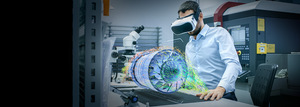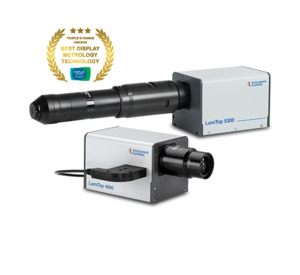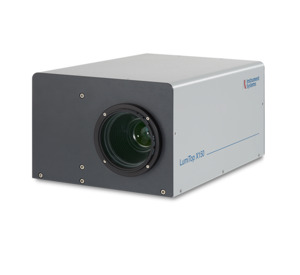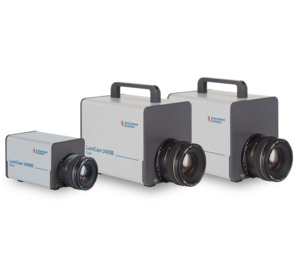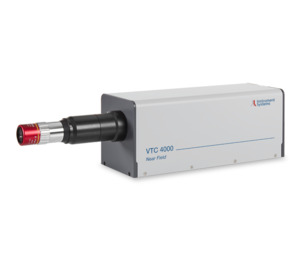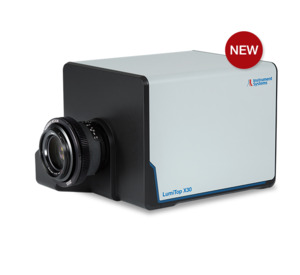VTC 2400 2D far-field analysis of infrared emitters
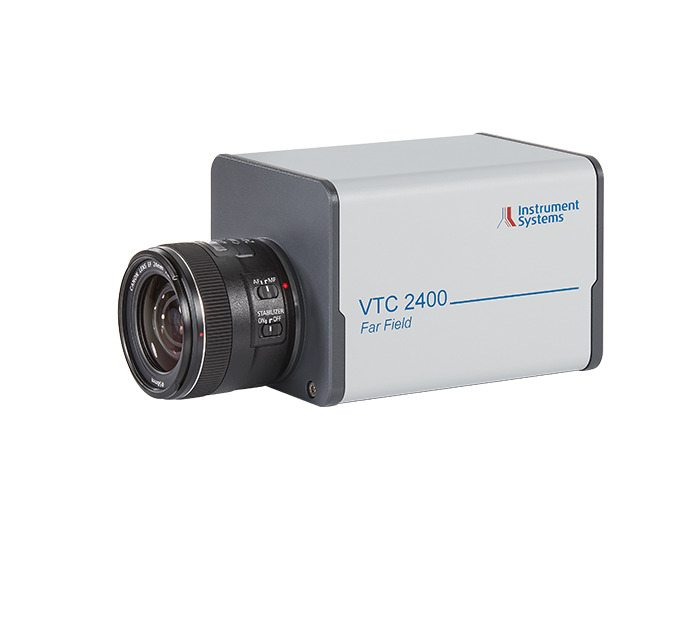

VTC 2400 – Fast testing of IR emitters in the far-field range with the highest measurement accuracy
The VTC 2400 is a high-resolution infrared-camera that was developed specially for 2D-far-field analysis of the radiant intensity distribution of VCSELs and IR emitters. The measurement system consists of a light-permeable screen and a monochrome camera specialized for measurements in the near infrared range. With its two standard versions, the VTC 2400 covers all typical aperture angles of IR sources: the VTC 2400-100 was designed for angles up to maximum ± 25°; the VTC 2400-200 for angles of maximum ± 60°.
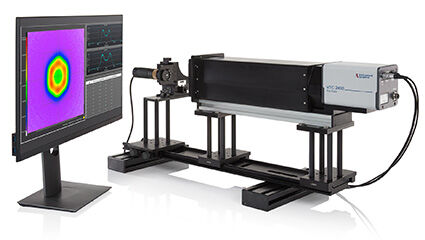
Thanks to the light-shielding camera housing, the system is suitable for use both in the lab and in production applications.
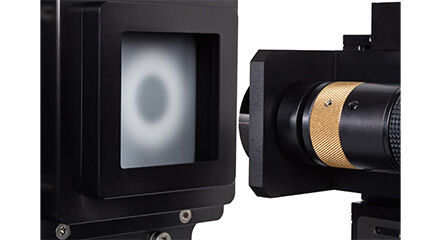
Ultra-fast radiation profiling in the far-field
The measuring system is constructed in such a way that the radiation source (DUT) irradiates a light-permeable, diffusely scattering screen, where its typical spatial radiation properties are visible. On the other side of the screen the infrared camera VTC 2400 captures this two-dimensional image and converts by calibration the irradiance [W/m2] into the radiant intensity distribution [W/sr] of the DUTs.
Identification of the intensity maximum for laser safety evaluation
The mapping of the radiation source via an additional screen and subsequent 2D imaging by the camera make the measuring system considerably more flexible. Basic measurement parameters, e.g. distance to the DUT, angular field of view or angle resolution can be optimally adjusted to one’s own application. The measurement distance is almost freely selectable for a given viewing angle, so that minimum angular resolutions can be achieved and the DUT in the far-field (measurement distance >> DUT size) can be measured with maximum precision. This permits precise reconstruction of the radiant intensity distribution and identification of the maximum intensity (hot-spot) by the software as required, e.g. for laser safety evaluation.
This unique measurement concept guarantees a minimum error budget and results in extremely high measurement accuracy. This enables manufacturers to exploit the full performance potential of VCSELs/lasers while guaranteeing reliable operation.
VTC 2400 - Product details:
- One-shot radiation profiling in the far-field for VCSEL arrays / EEL / LED (DUT wavelength range 800–1000 nm)
- Radiant intensity distribution / beam profile at a flexible distance
- Numerical aperture and beam divergence
- Homogeneity testing of the spatial radiation properties
- Identification of maximum intensity for laser safety evaluations
- Radiometric calibration traceable to the PTB (German National Metrology Institute)
VTC 2400 – The perfect solution for far-field analysis of IR sources
The VTC 2400 was developed specifically for the far-field analysis of IR emitters and offers the optimum measurement solution for both the lab and production environment.
It is particularly recommended for the analysis of VCSEL applications, including 3D sensing in smartphones (e.g. facial and object recognition) and in the automotive industry (e.g. LiDAR systems, time-of-flight).




